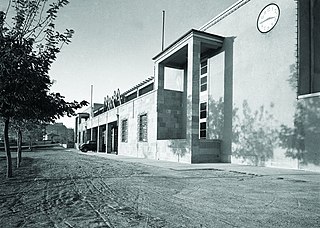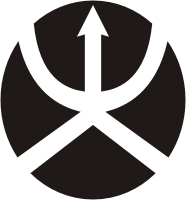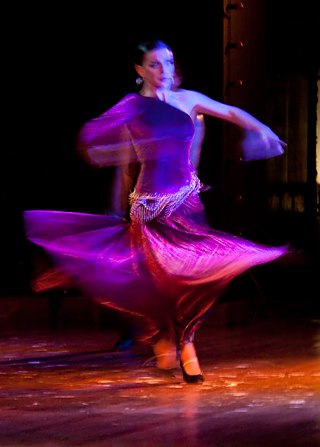
Ballet is a type of performance dance that originated during the Italian Renaissance in the fifteenth century and later developed into a concert dance form in France and Russia. It has since become a widespread and highly technical form of dance with its own vocabulary. Ballet has been influential globally and has defined the foundational techniques which are used in many other dance genres and cultures. Various schools around the world have incorporated their own cultures. As a result, ballet has evolved in distinct ways.
Dance moves or dance steps are usually isolated, defined, and organized so that beginning dancers can learn and use them independently of each other. However, more complex movements are influenced by musicality and lyrical relevance to express emotions or refer to a message. Dance moves tend to emphasize the concepts of lead and follow and connection.
This is a list of dance terms that are not names of dances or types of dances. See List of dances and List of dance style categories for those.
Because ballet became formalized in France, a significant part of ballet terminology is in the French language.

Labanotation is a system for analyzing and recording human movement, invented by Austro-Hungarian choreographer and dancer Rudolf von Laban, who developed his notation on movements in the 1920s.

Dance notation is the symbolic representation of human dance movement and form, using methods such as graphic symbols and figures, path mapping, numerical systems, and letter and word notations. Several dance notation systems have been invented, many of which are designed to document specific types of dance while others have been developed with capturing the broader spectrum of human movement potential. A dance score is a recorded dance notation that describes a particular dance.

The Royal Academy of Dance (RAD) is a UK-based examination board specialising in dance education and training, with an emphasis on classical ballet. The RAD was founded in London, England in 1920 as the Association of Teachers of Operatic Dancing, and was granted a Royal Charter in 1935. Queen Camilla is patron of the RAD, and Darcey Bussell was elected to serve as president in 2012, succeeding Antoinette Sibley who served for 21 years.

Pointe technique is part of classical ballet involving a technique that concerns pointe work, in which a ballet dancer supports all body weight on the tips of fully extended feet when wearing pointe shoes. A dancer is said to be en pointe when the body is supported in this manner, and a fully extended vertical foot is said to be en pointe when touching the floor, even when not bearing weight.
Rudolf Benesh was a British mathematician who created the Benesh Movement Notation for dancing.
Dance position is the position of a dancer or the mutual position of a dance couple assumed during a dance. Describing and mastering proper dance positions is an important part of dance technique.

The Hacettepe University Ankara State Conservatory, the first conservatory to be founded in the Republic of Turkey, was established in 1936 by a directive of Mustafa Kemal Atatürk.
Eduard Greyling is a South African ballet dancer, now retired. After an illustrious career as a principal dancer with CAPAB Ballet in Cape Town, he became well known as a dance notator, teacher, journalist, and critic.

Eshkol-Wachman movement notation is a notation system for recording movement on paper or computer screen. The system was created in Israel by dance theorist Noa Eshkol and Avraham Wachman, a professor of architecture at the Technion. The system is used in many fields, including dance, physical therapy, animal behavior and early diagnosis of autism.
The terms dance technology and Dance and Technology is the application of modern information technology in activities related to dance: in dance education, choreography, performance, and research.

In dance and gymnastics, a turn is a rotation of the body about the vertical axis. It is usually a complete rotation of the body, although quarter (90°) and half (180°) turns are possible for some types of turns. Multiple, consecutive turns are typically named according to the number of 360° rotations.

Rudolf Laban created a movement theory and practice that reflected what he recognized as Space Harmony. The practice/theory is based on universal patterns of nature and of man as part of a universal design/order and was named by Laban: Space Harmony or Choreutics.

Graham technique is a modern dance movement style and pedagogy created by American dancer and choreographer Martha Graham (1894–1991). Graham technique has been called the "cornerstone" of American modern dance, and has been taught worldwide. It is widely regarded as the first codified modern dance technique, and strongly influenced the later techniques of Merce Cunningham, Lester Horton, and Paul Taylor.
Georgette Tsinguirides is a ballet dancer, ballet mistress and choreologist. She was the assistant of John Cranko at the Stuttgart Ballet and became in 1966 the first choreologist in Germany. Still active in 2015 after 70 years with the Stuttgart Ballet, Tsinguirides has been teaching the works choreographed by Cranko and his successors to several generations of ballet companies internationally.

Joan Benesh was a British ballet dancer who, with her husband Rudolf, created the Benesh Movement Notation, which is the leading British system of dance notation.
Flamenco zapateado notation or Flamenco zapateado (foot-stomping) notation is a type of dance notation. It is the graphic representation of the sonorous and motor aspects of the particular movements of flamenco dancing that are produced by the action of zapateado or foot-stomping.











